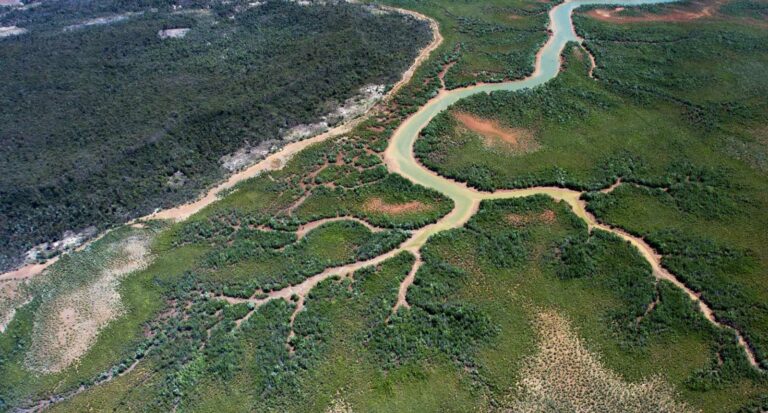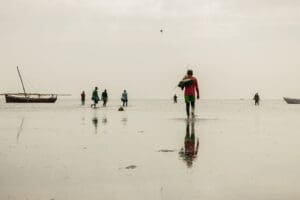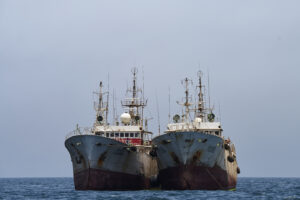New research has produced a contemporary map, quantified and contextualised loss, characterised ecological variability, and provided the first estimates of the carbon stocks in Madagascar’s vast Mahajamba Bay, one of Africa’s largest and most pristine mangrove ecosystems.
Mangrove ecosystems are found in more than 120 countries throughout the tropics, providing critical goods and services to coastal communities, from coastal protection to fuel wood and fisheries. They also support high levels of endemic and often imperilled biodiversity, and play a key role to global climate change mitigation through sequestering enormous quantities of CO2. Despite their importance, global mangrove loss has been rapid and widespread over recent decades, with annual estimates at 1-2 %, exceeding rates in many inland tropical forests.
The research, carried out by scientists from Blue Ventures, the University of Antananarivo’s Department of Forestry (ESSA-Forêts), the United States Geological Survey and other partners found that Mahajamba Bay contains over 45,000 hectares of mangroves, qualifying it as Madagascar’s second largest mangrove ecosystem. The analysis of satellite imagery found that while historically not prominent, mangrove loss is on the rise. Notably, from 2000-2010, there was a loss of 1,050 hectares, or over 3.8 % of the total mangrove ecosystem. Socio-economic research and ground observations help explain that loss is increasingly driven by commercial timber extraction.
With weak environmental management, a rapidly rising population, and other external and internal factors contributing to economic pressures, human pressures on mangroves and their fisheries resources are expected to climb rapidly.
The results of comprehensive ecological and carbon stock inventories show the significance of Mahajamba Bay towards climate change mitigation. High stature closed-canopy mangroves have the highest average carbon stock estimates, with estimates comparable to other national priority mangrove conservation areas.
“Collectively, our research shows clearly that loss in Mahajamba Bay is not nearly as prominent or widespread as in other large mangrove ecosystems in Madagascar, such as the north-western Ambaro-Ambanja Bays (AAB)”, said Dr Harifidy Rakoto Ratsimba, researcher at the University of Antananarivo and co-author of the study. “There remains great potential to partner with local communities to ensure a long-term balance between their resource-use and natural ecological processes, and mitigate the type of widespread loss already observed in other mangrove ecosystems.”
These results support ongoing initiatives investigating the feasibility of mangrove carbon financing projects and other payments for ecosystem services (PES) initiatives.
Read more about the publication or download the open access pdf
Find out more about our Blue Forests research and conservation























